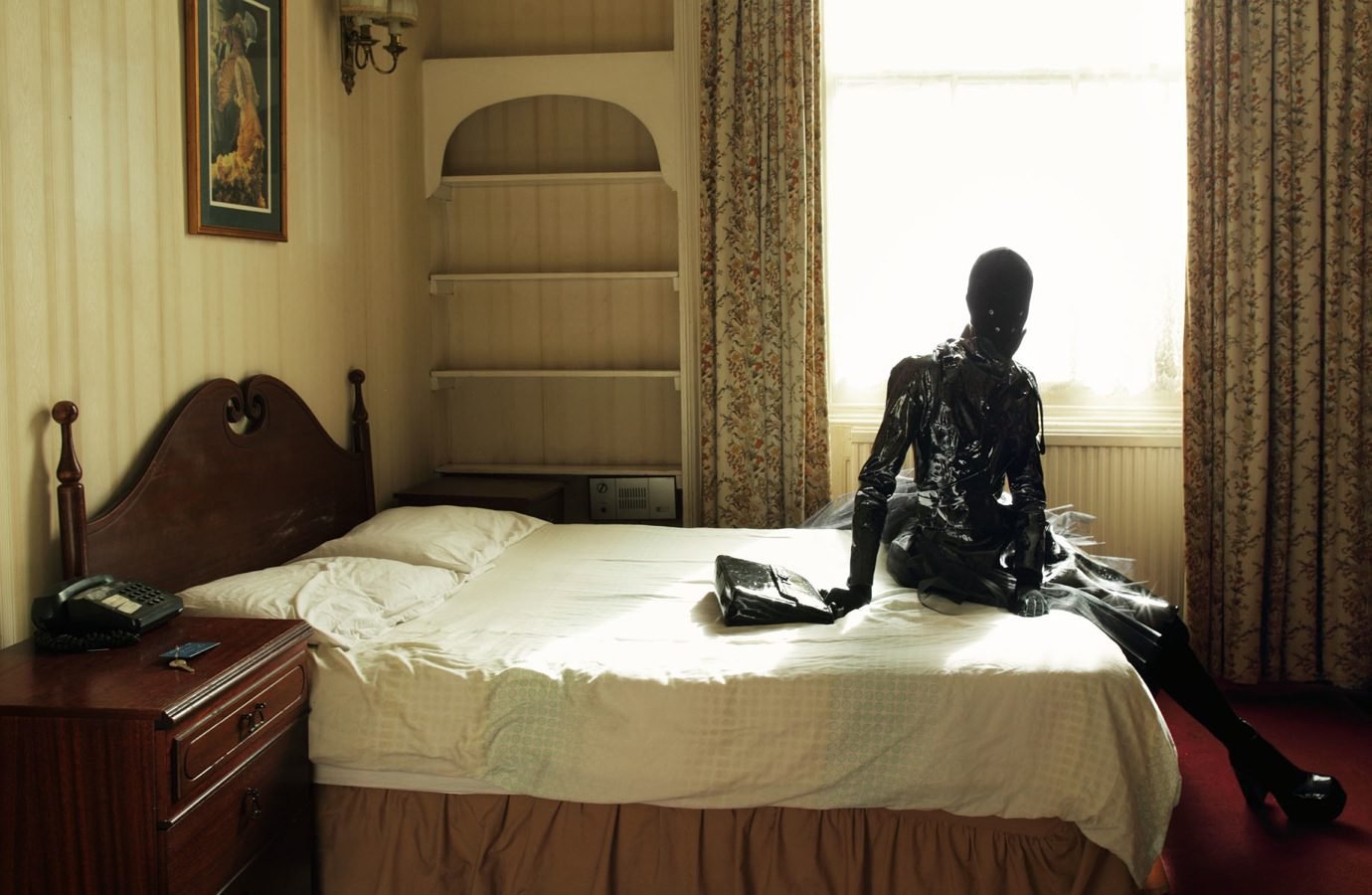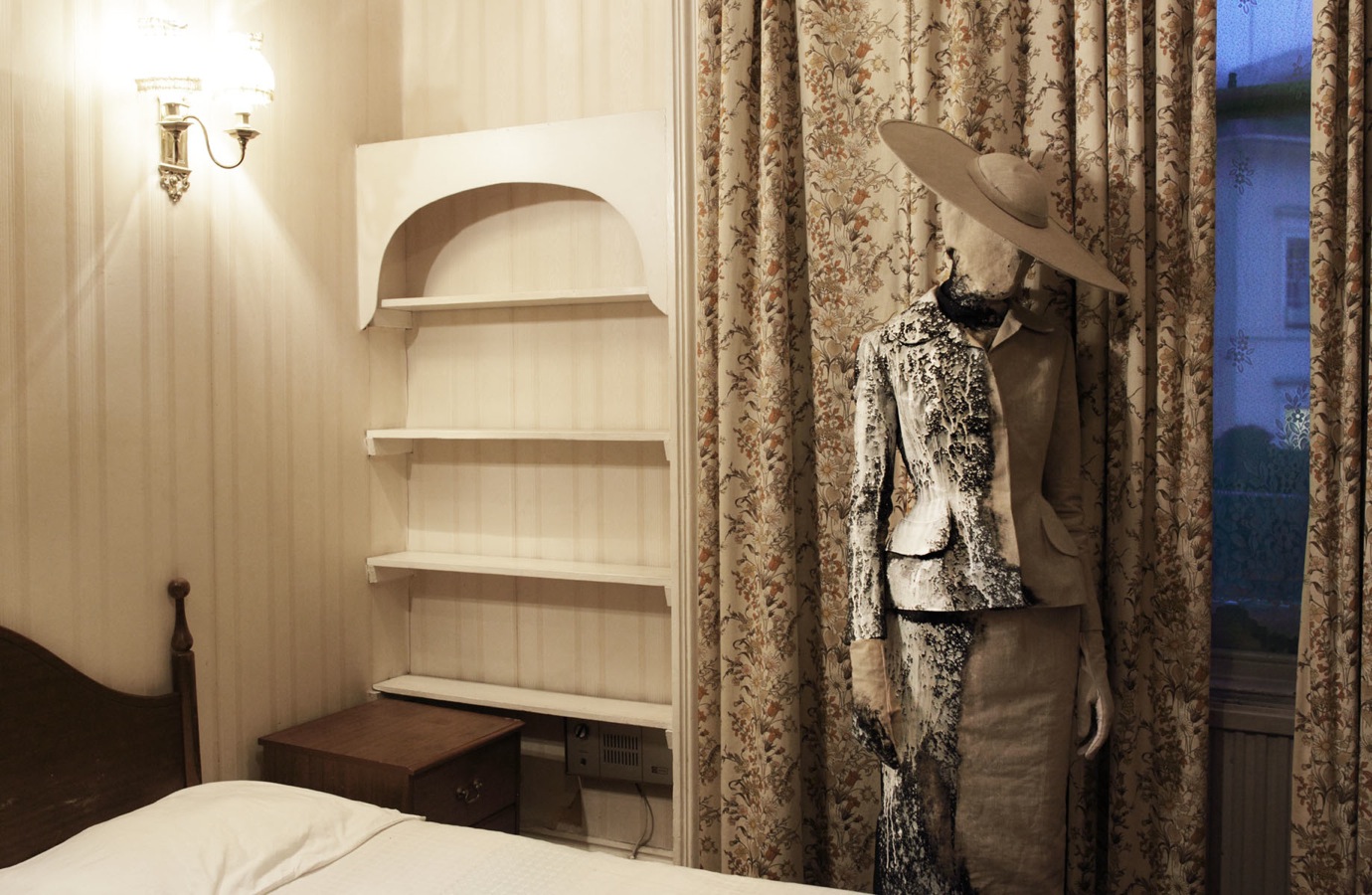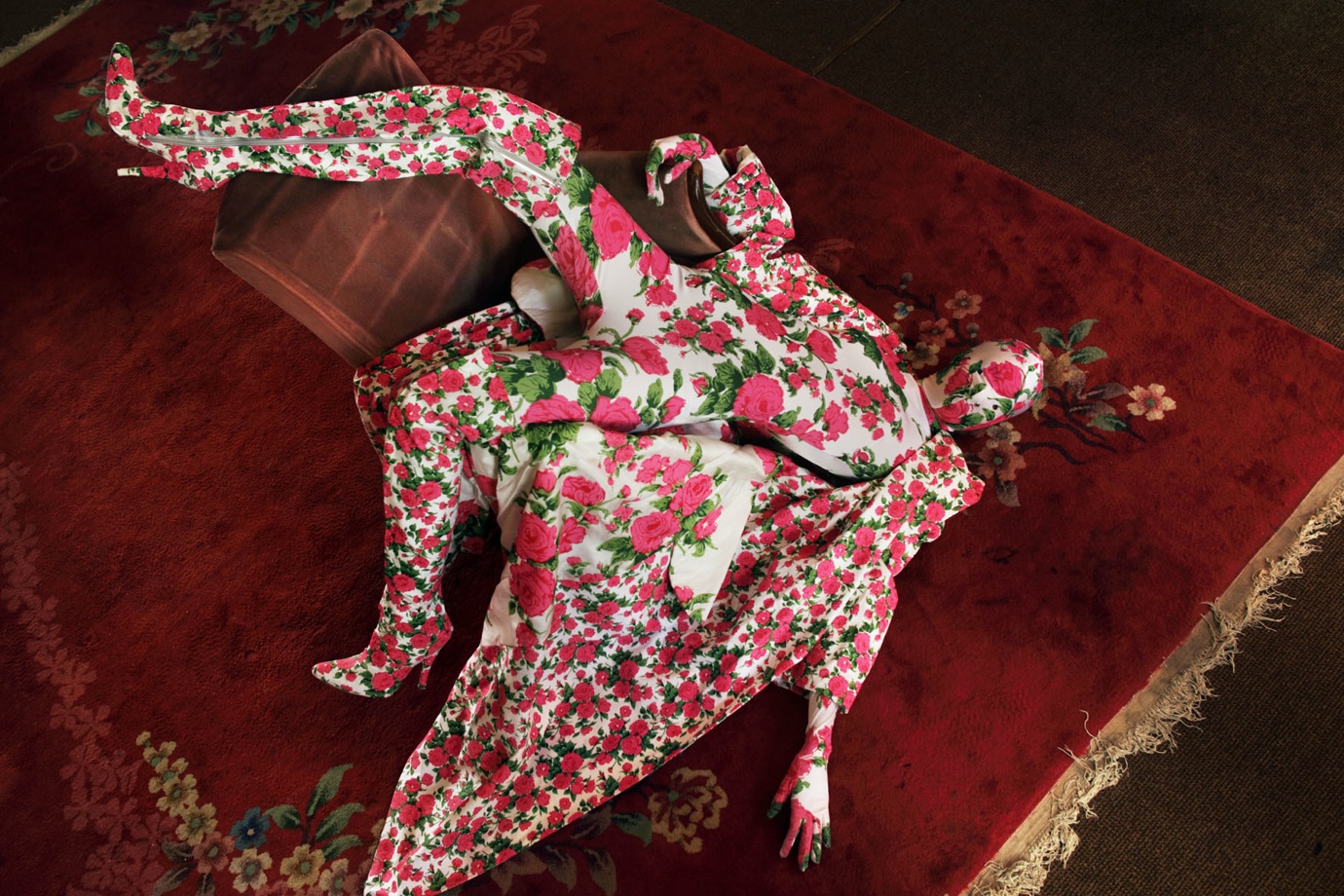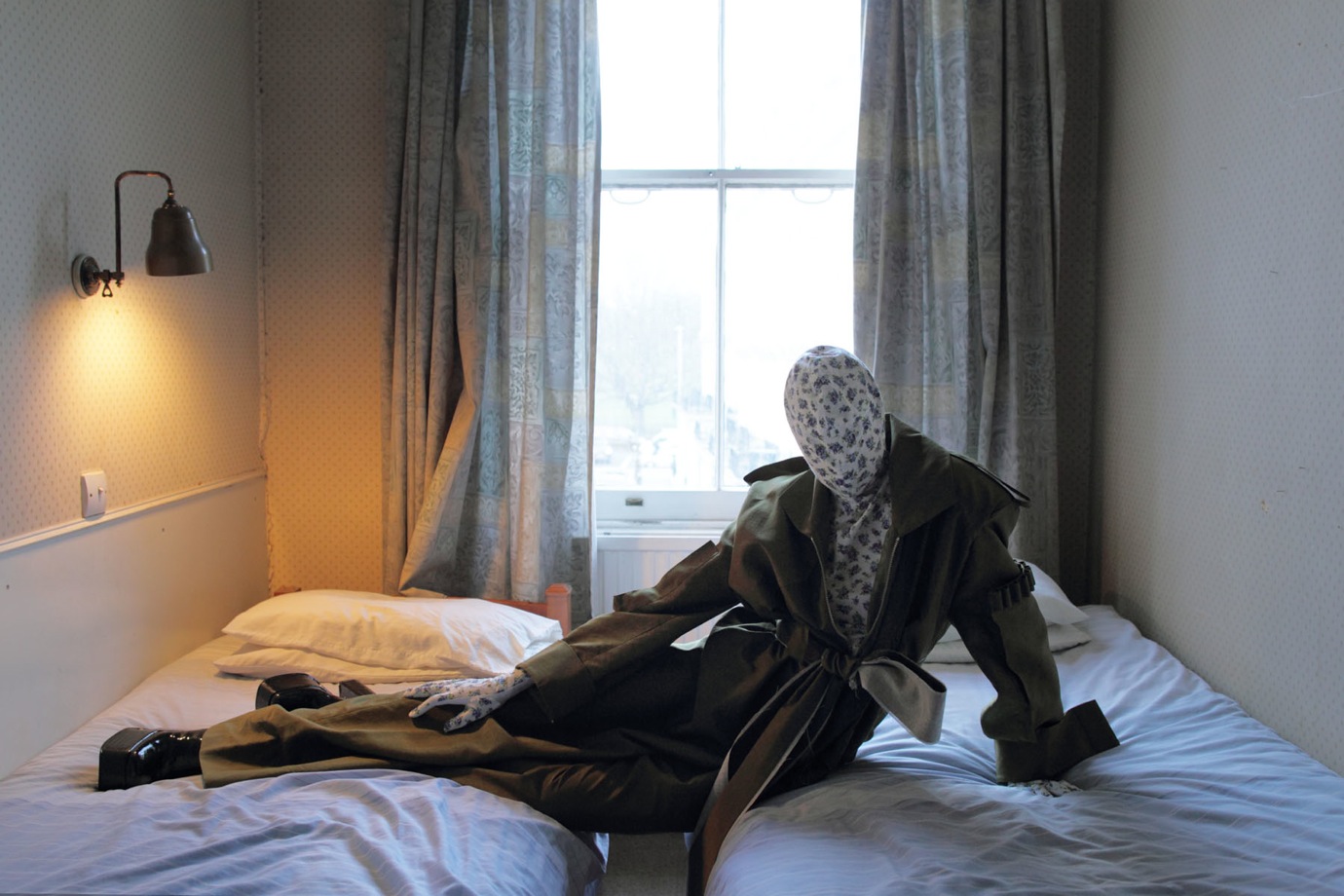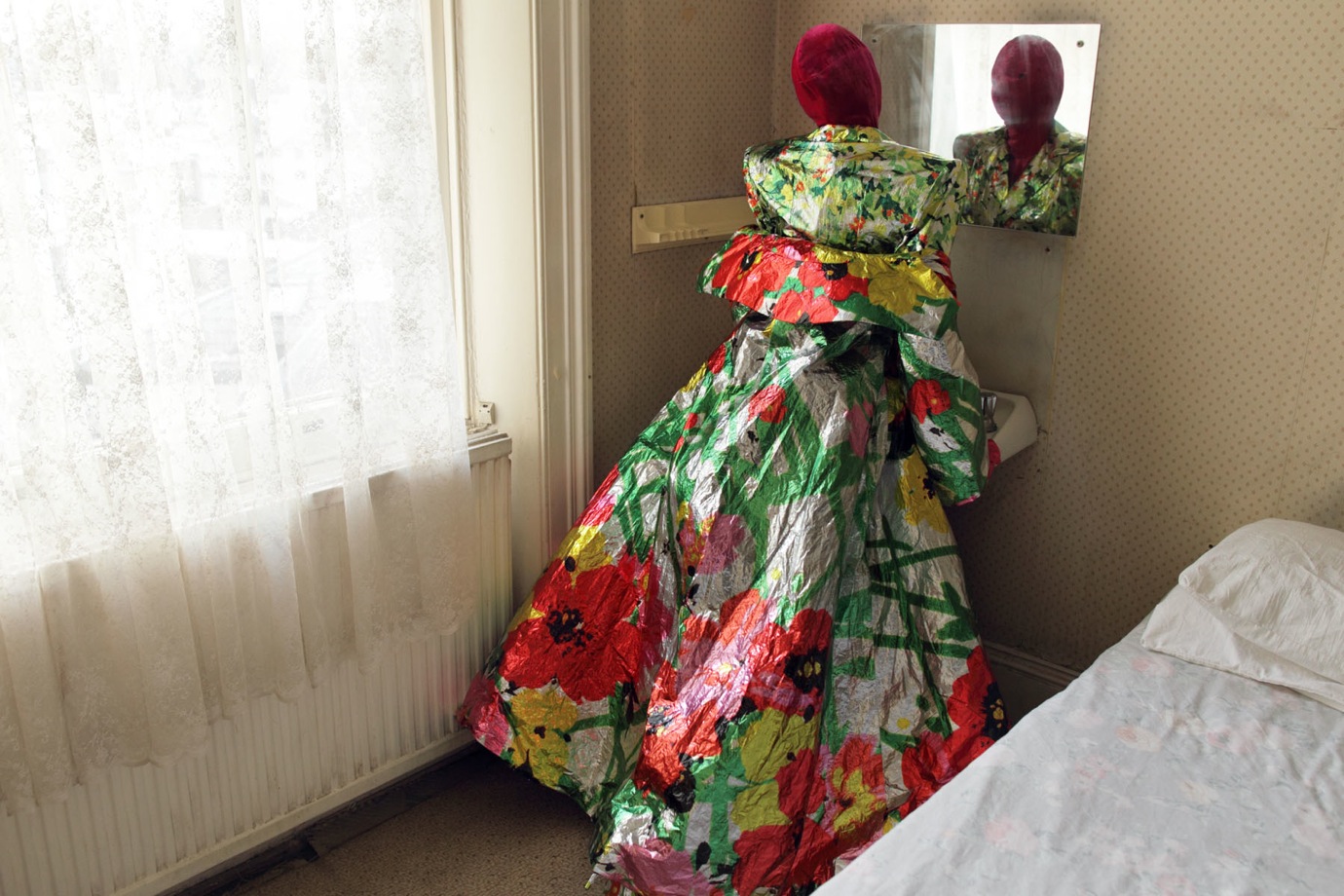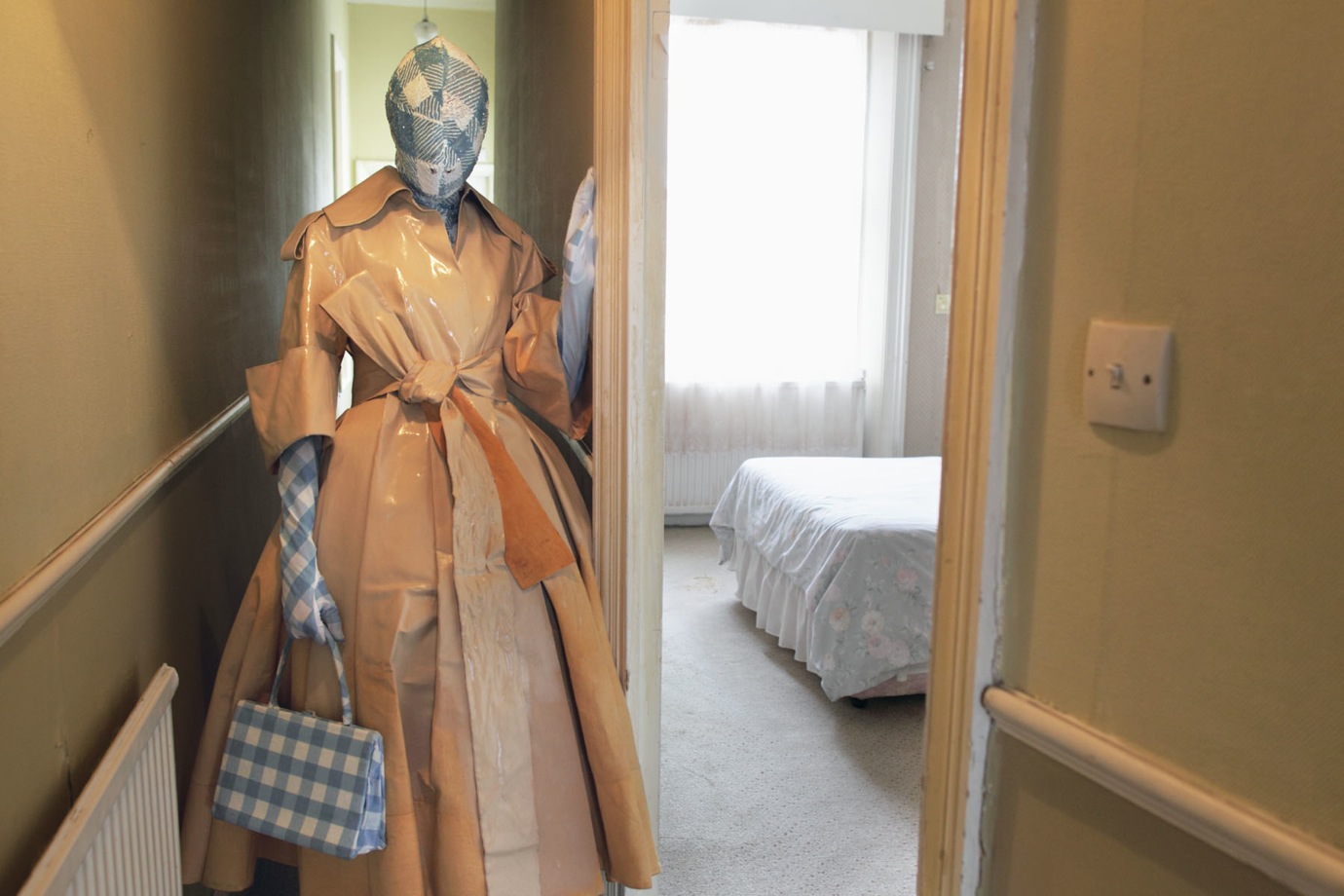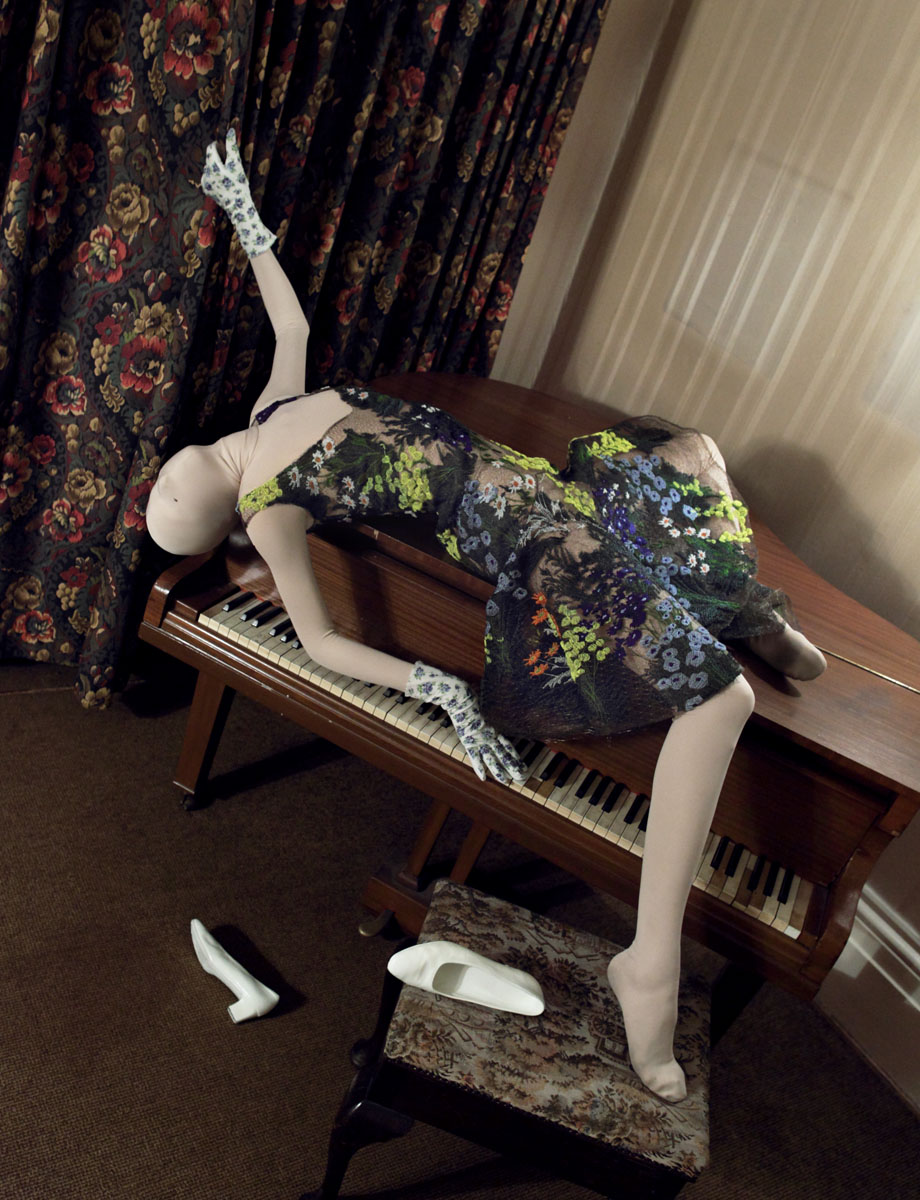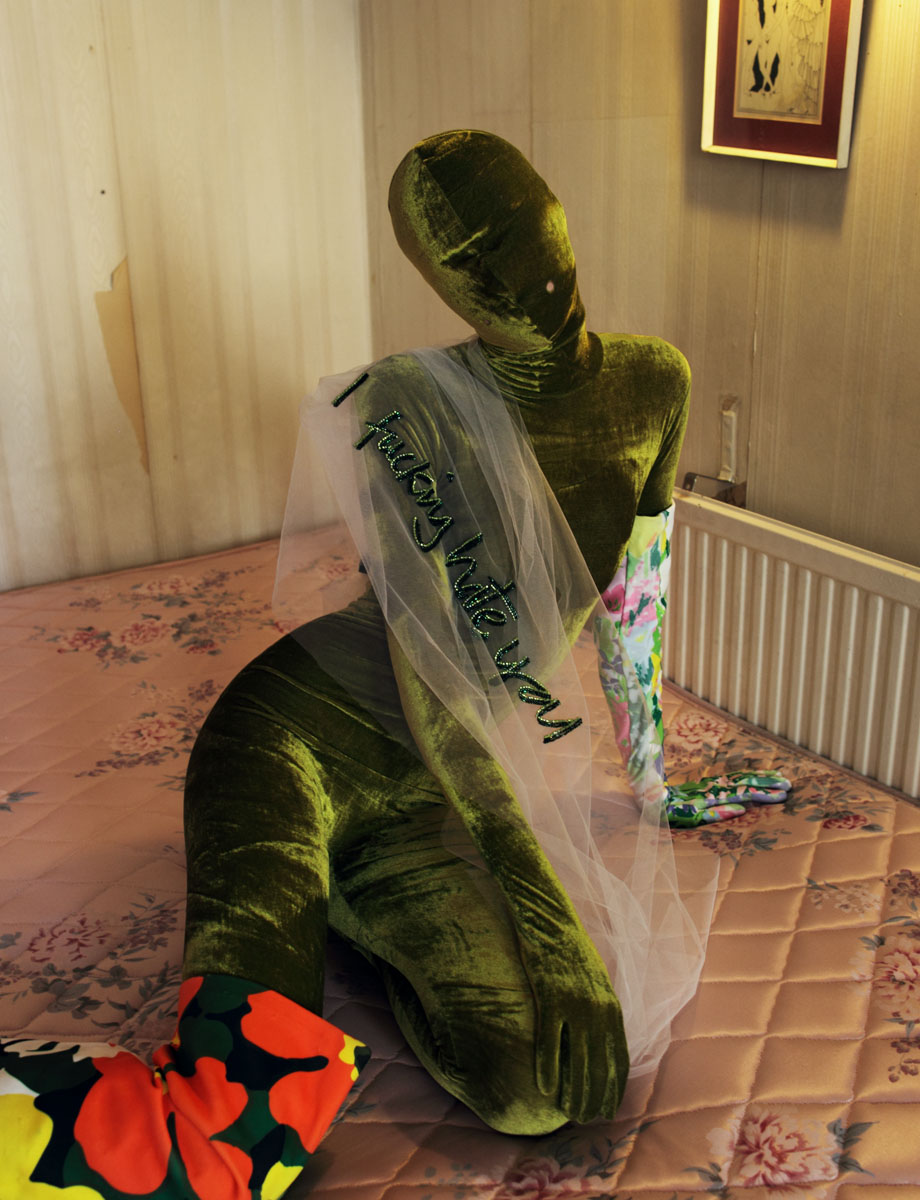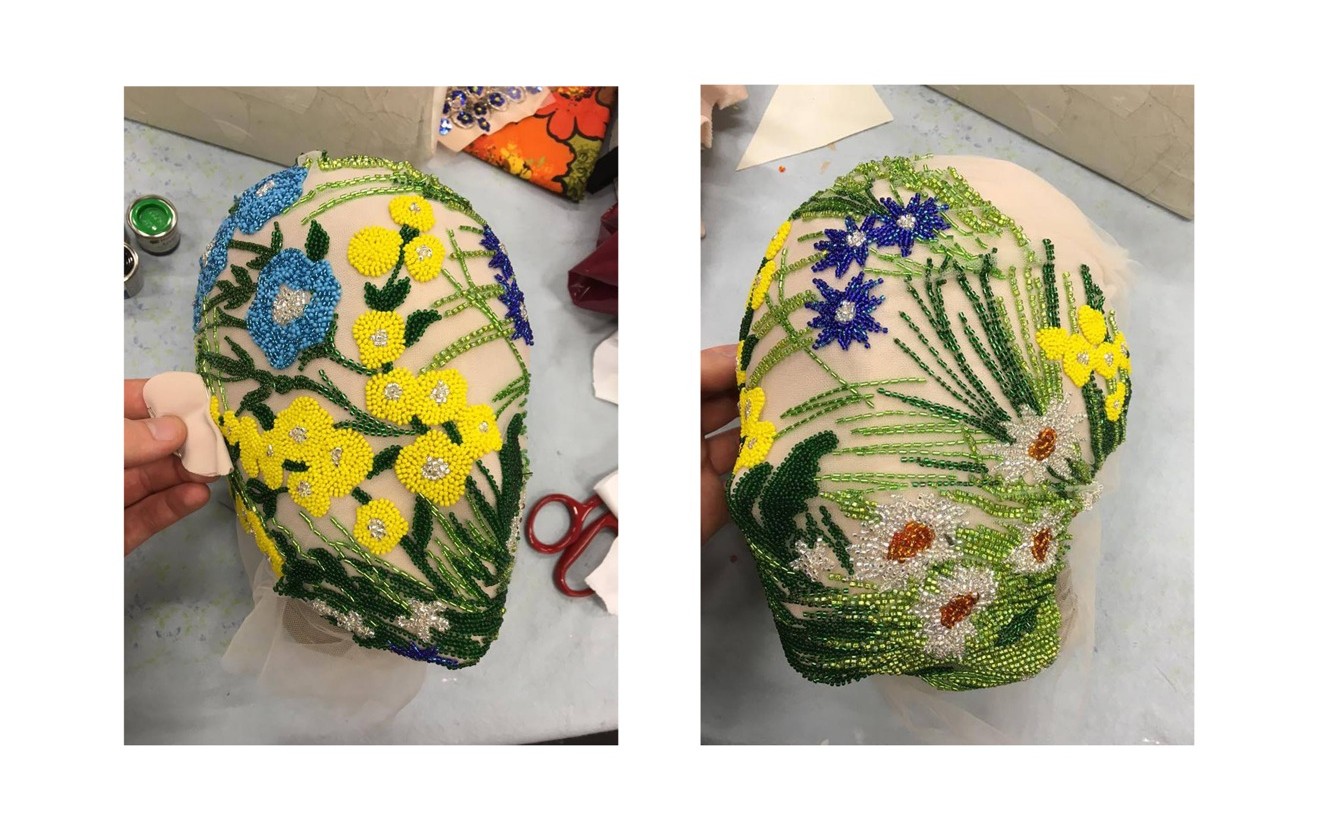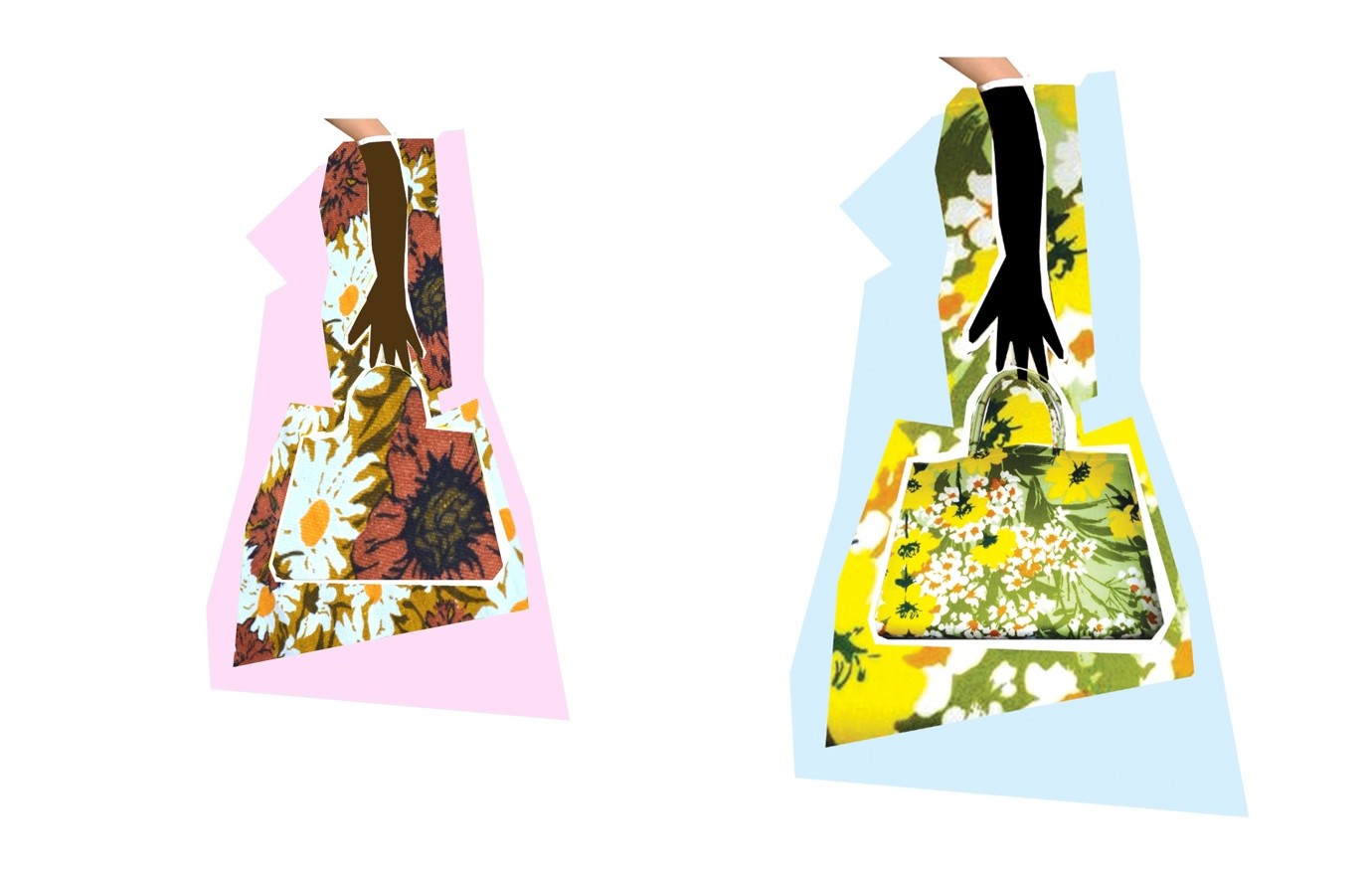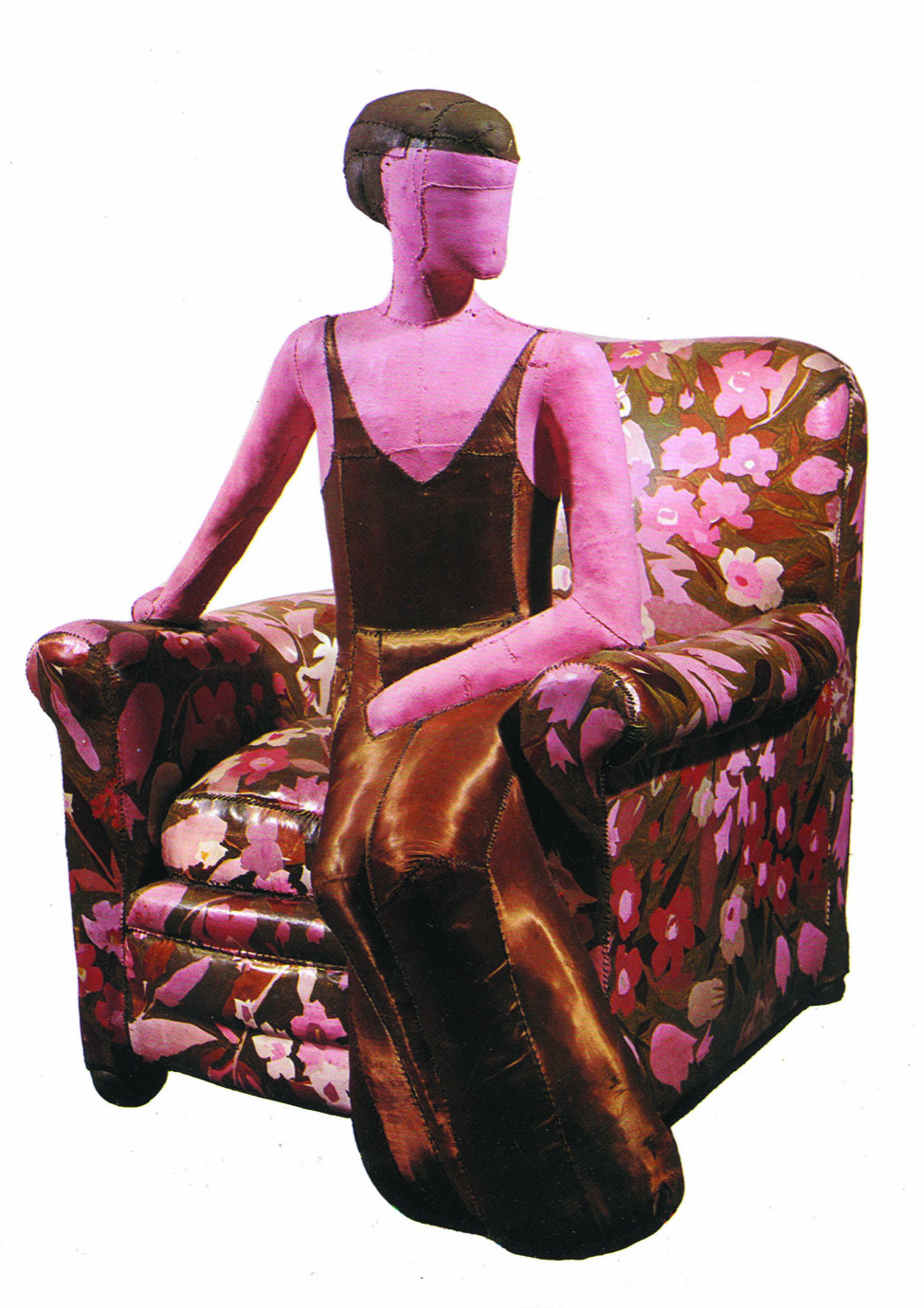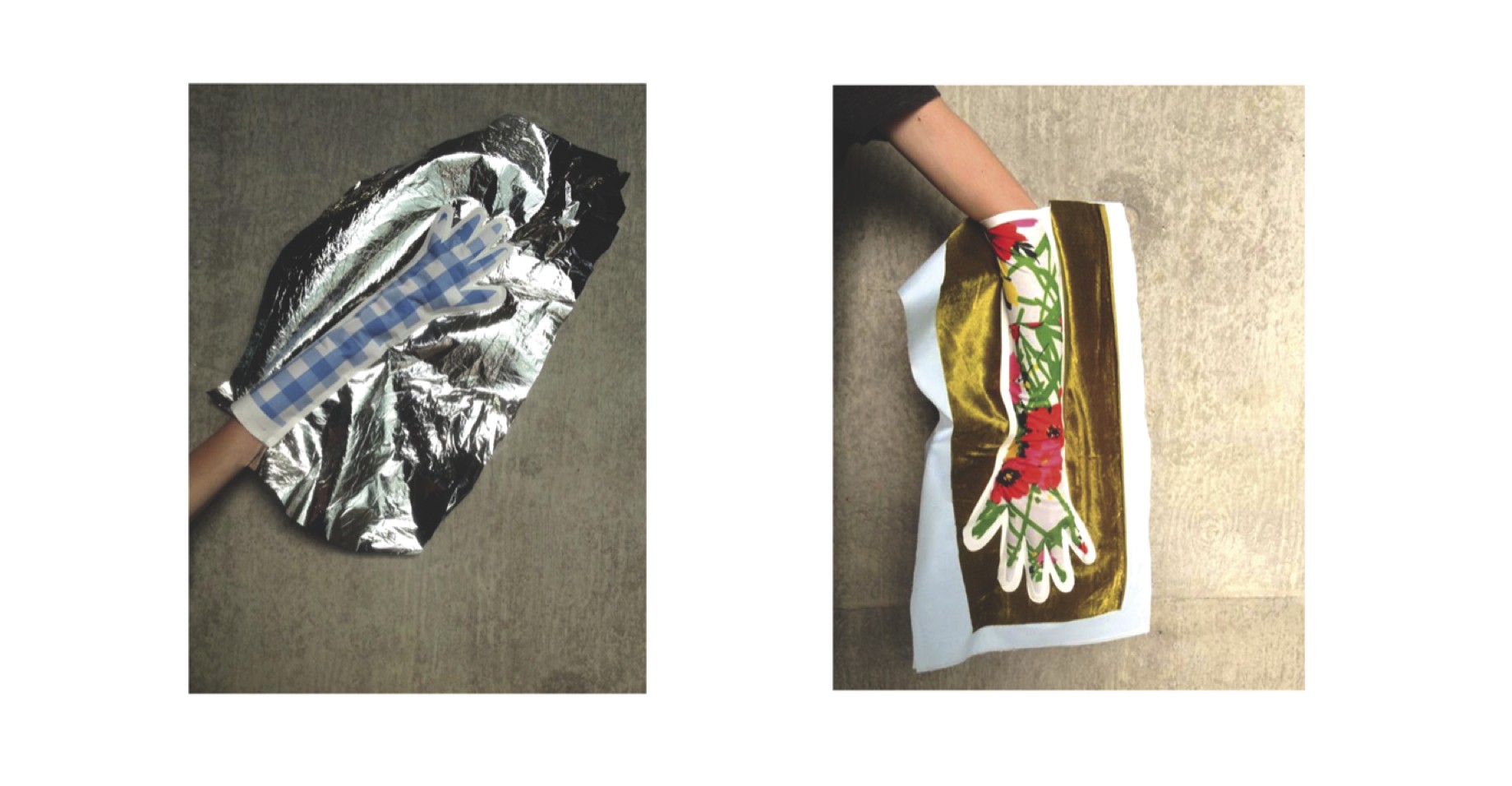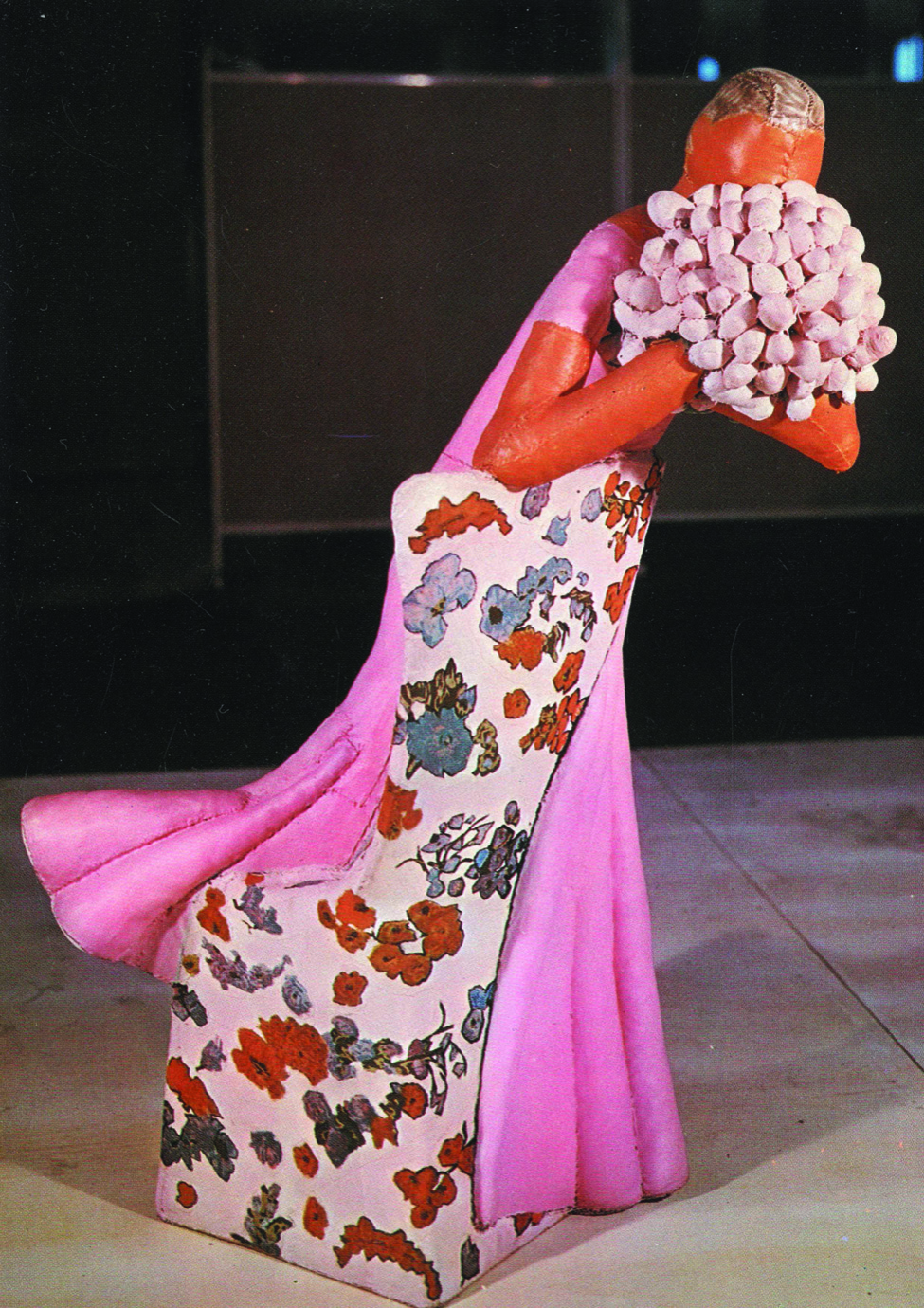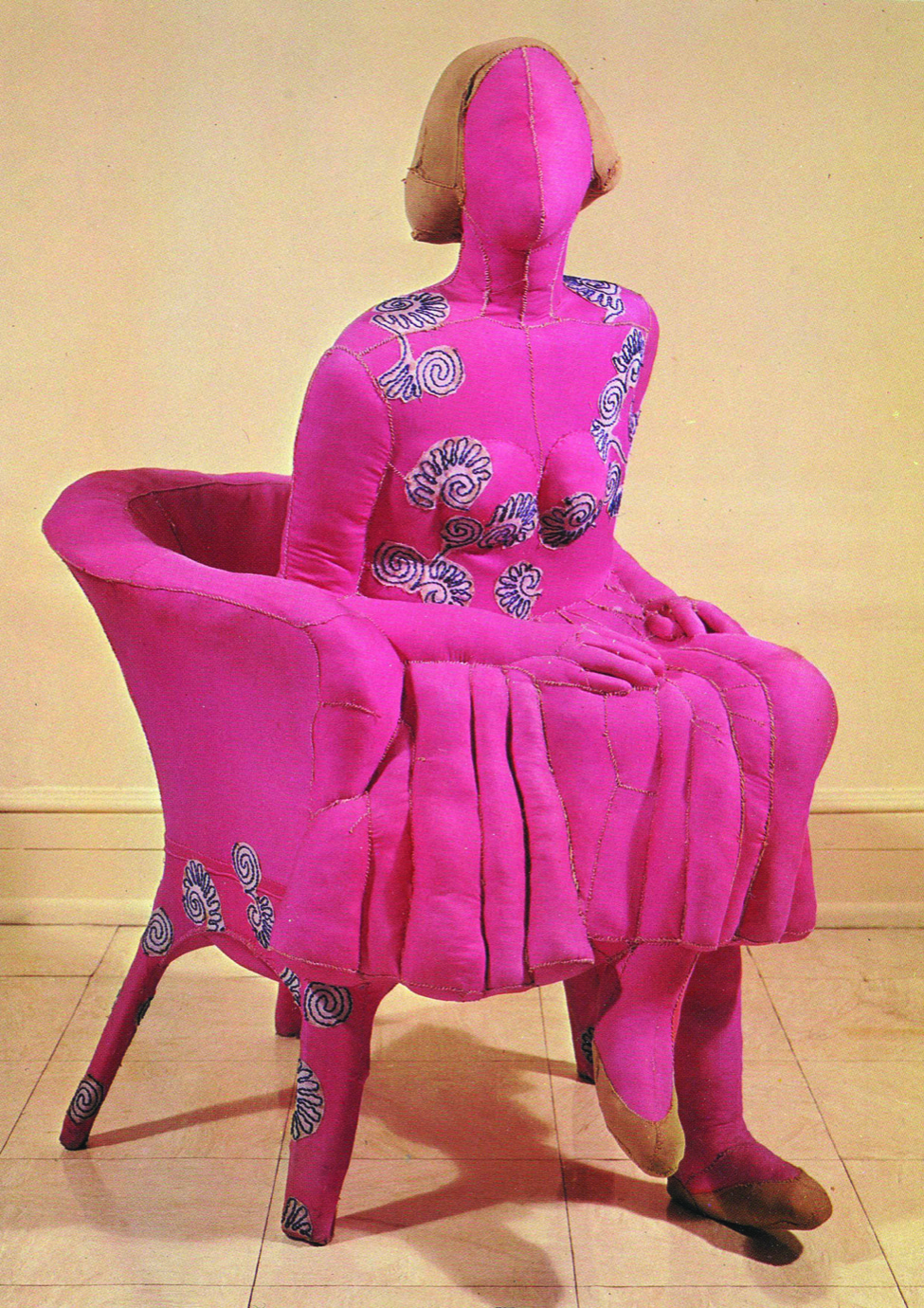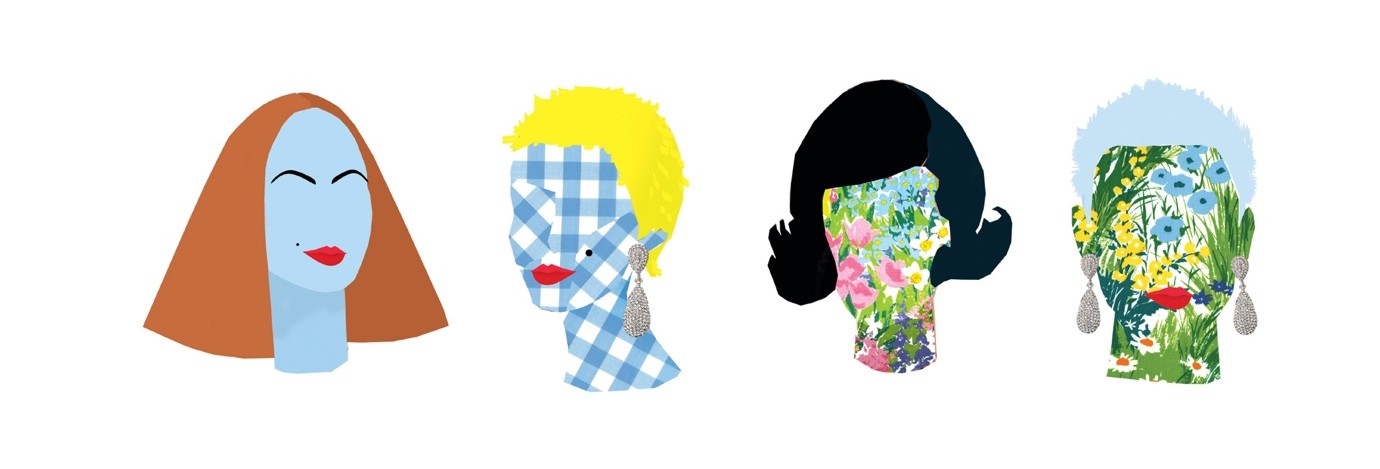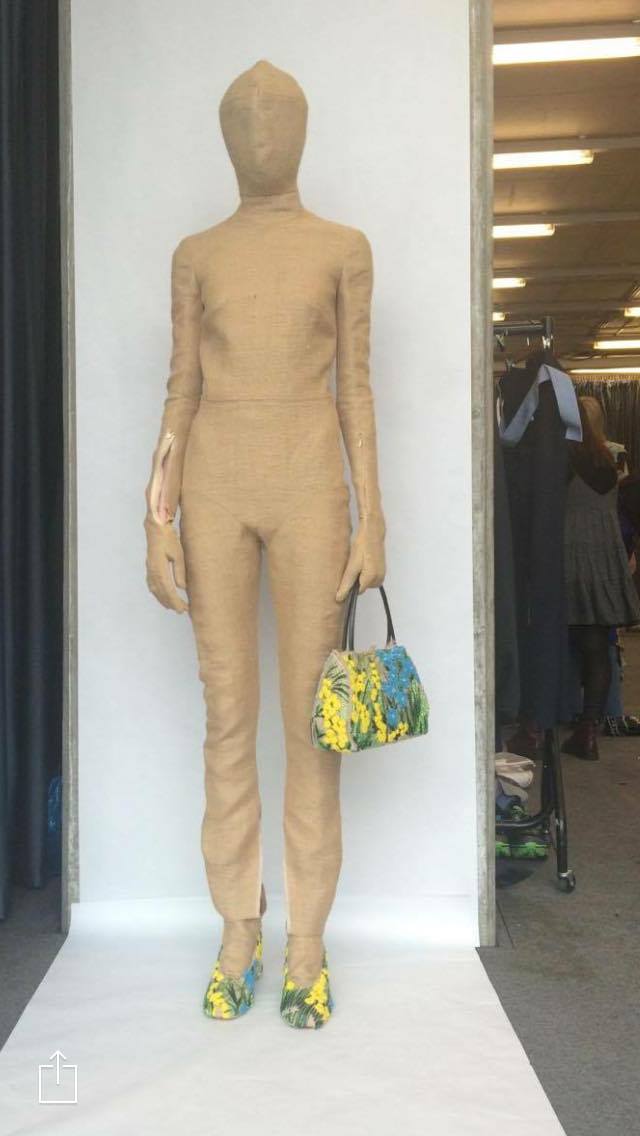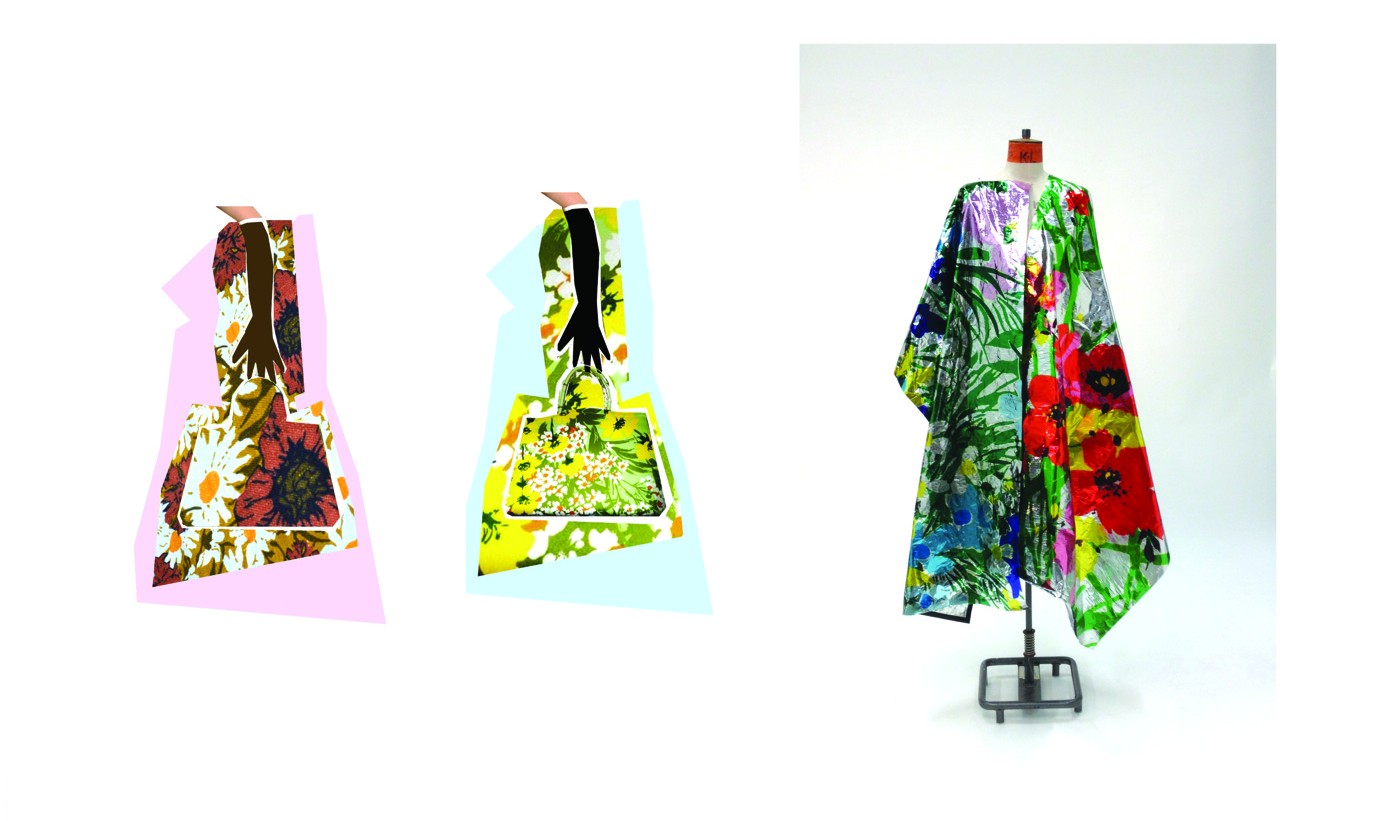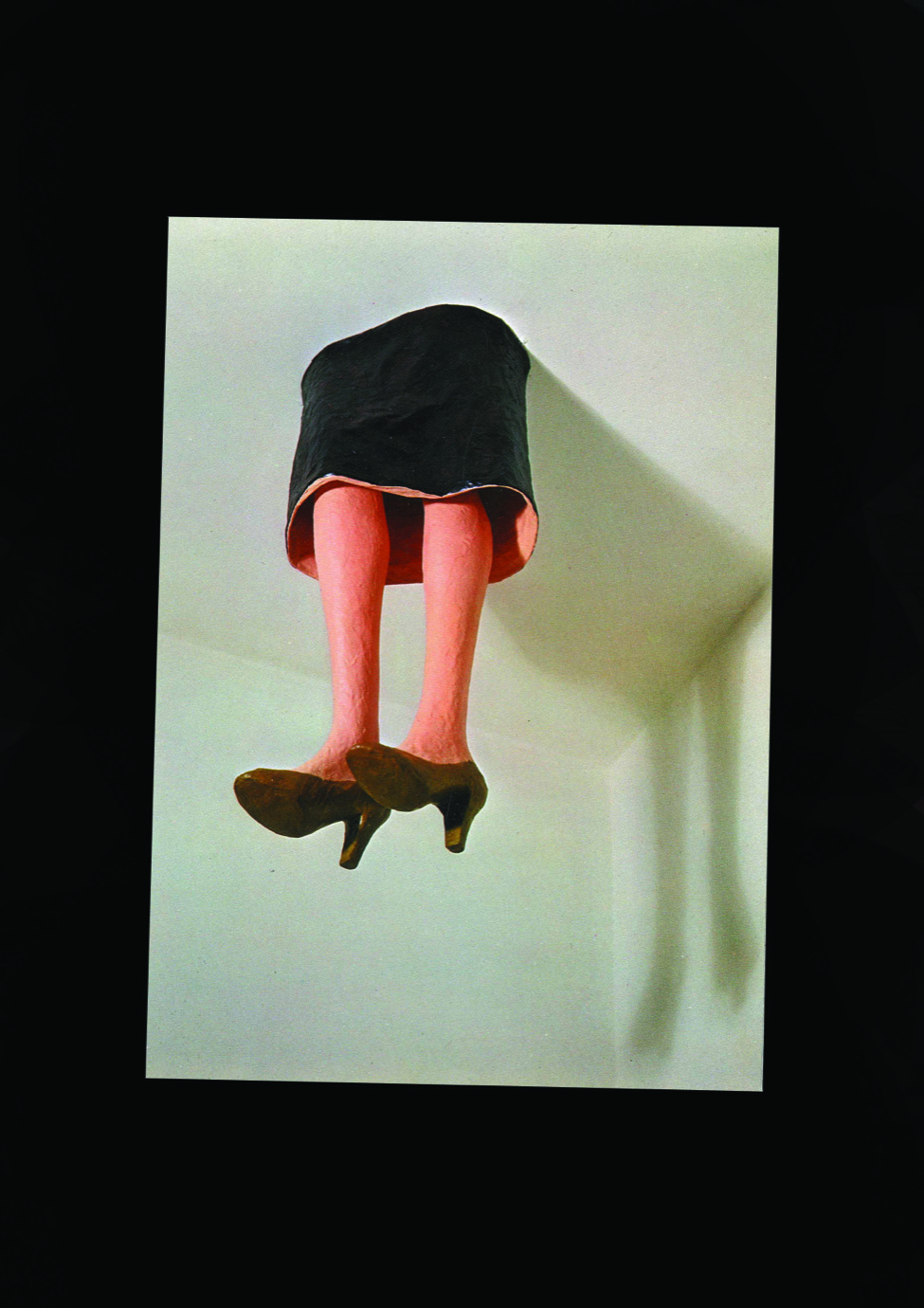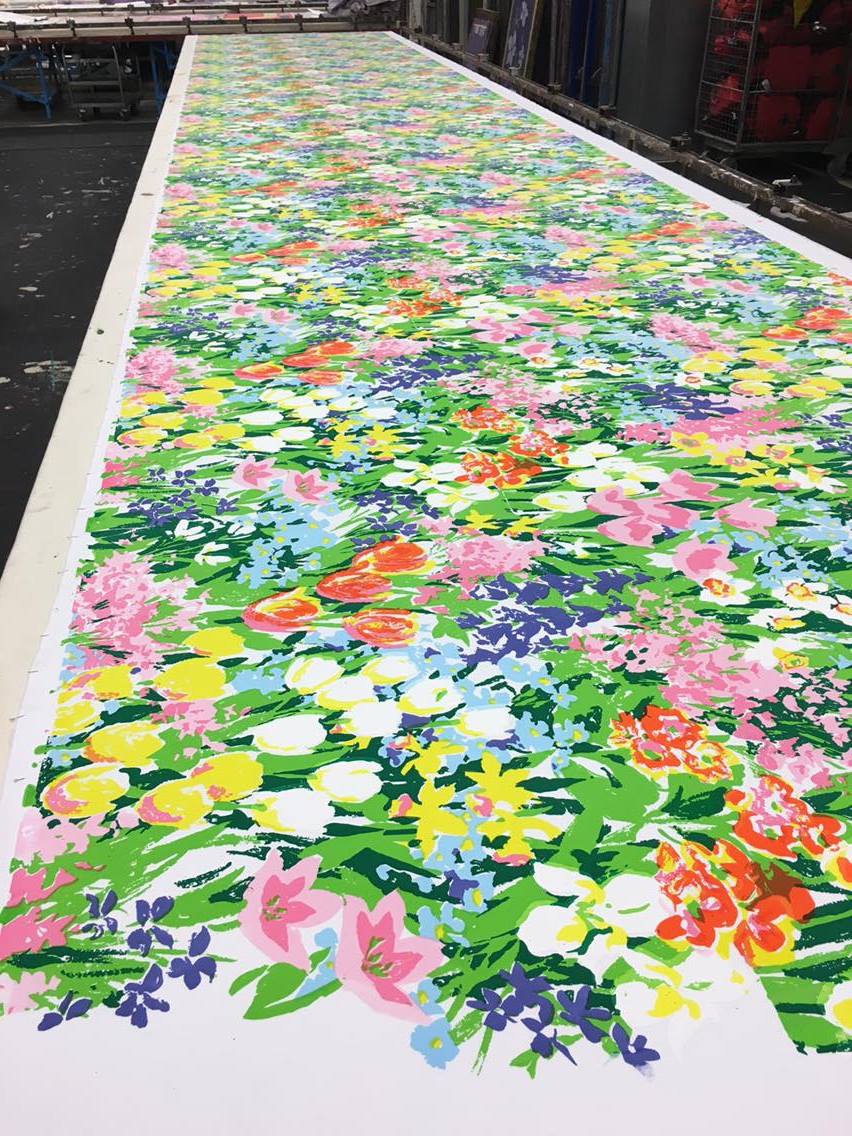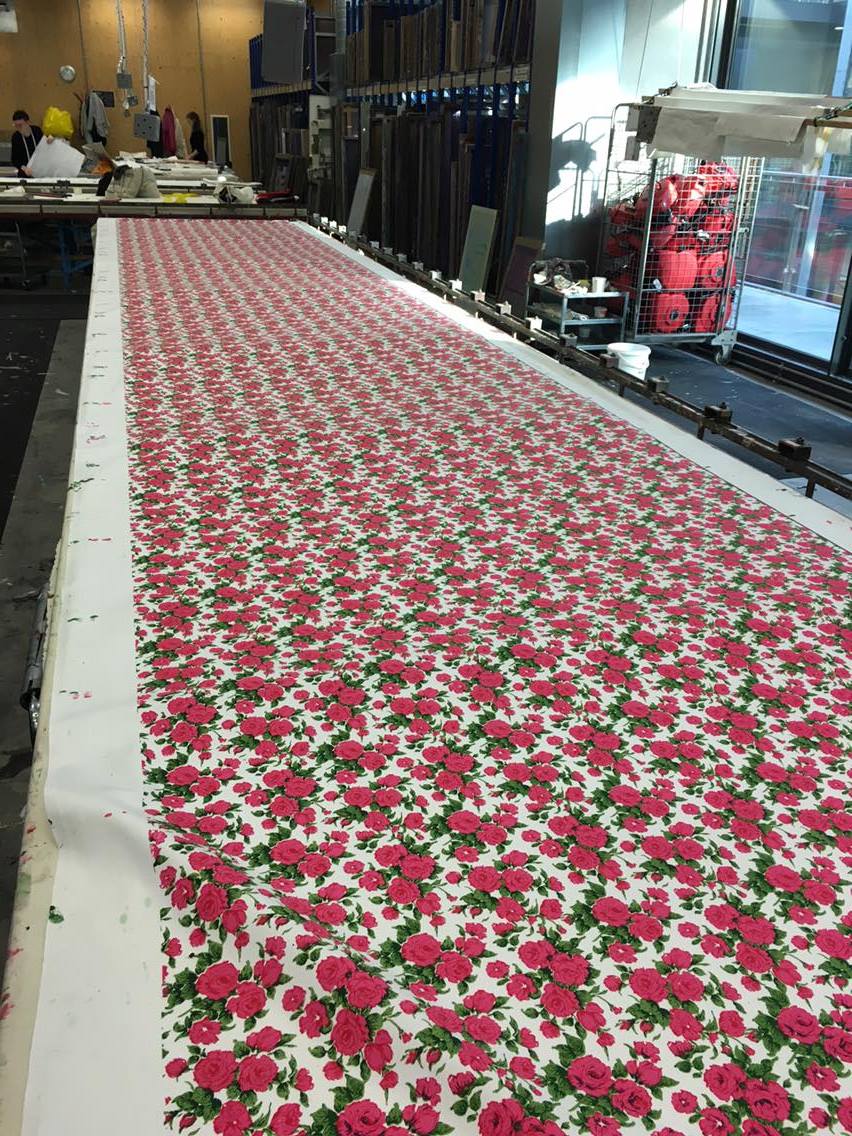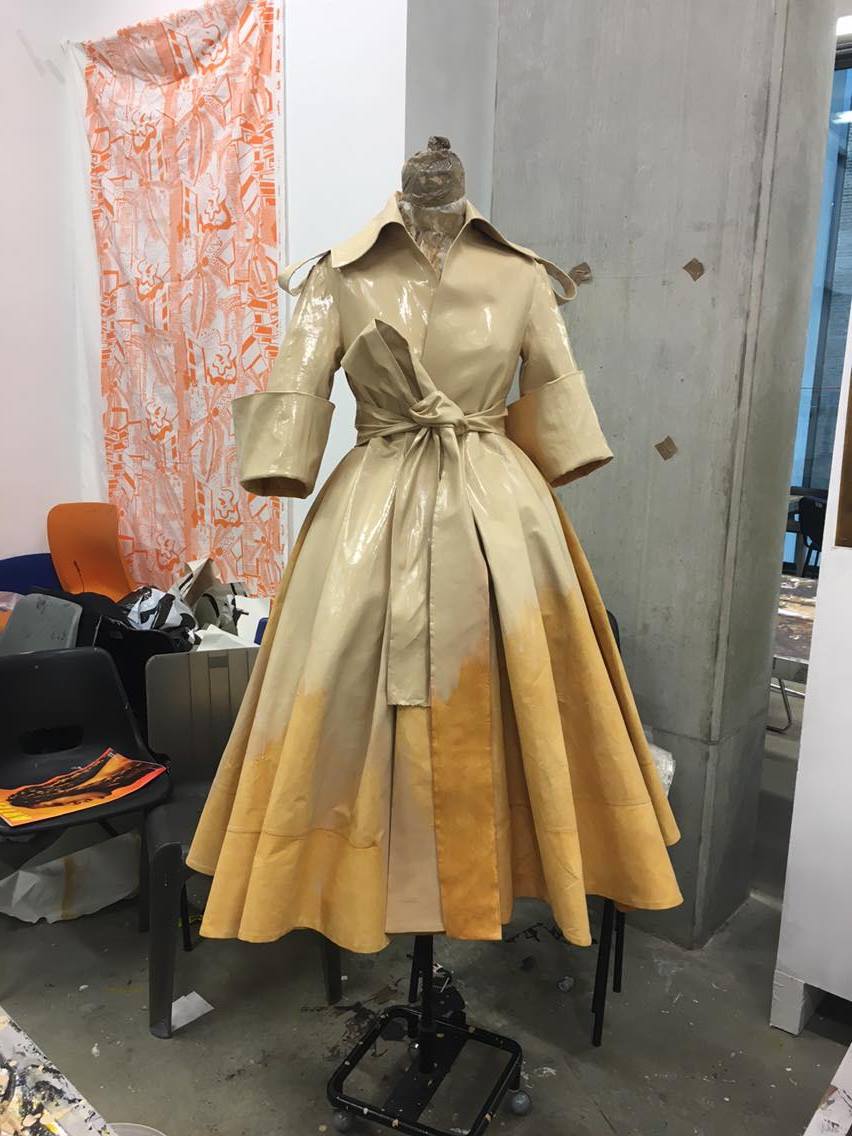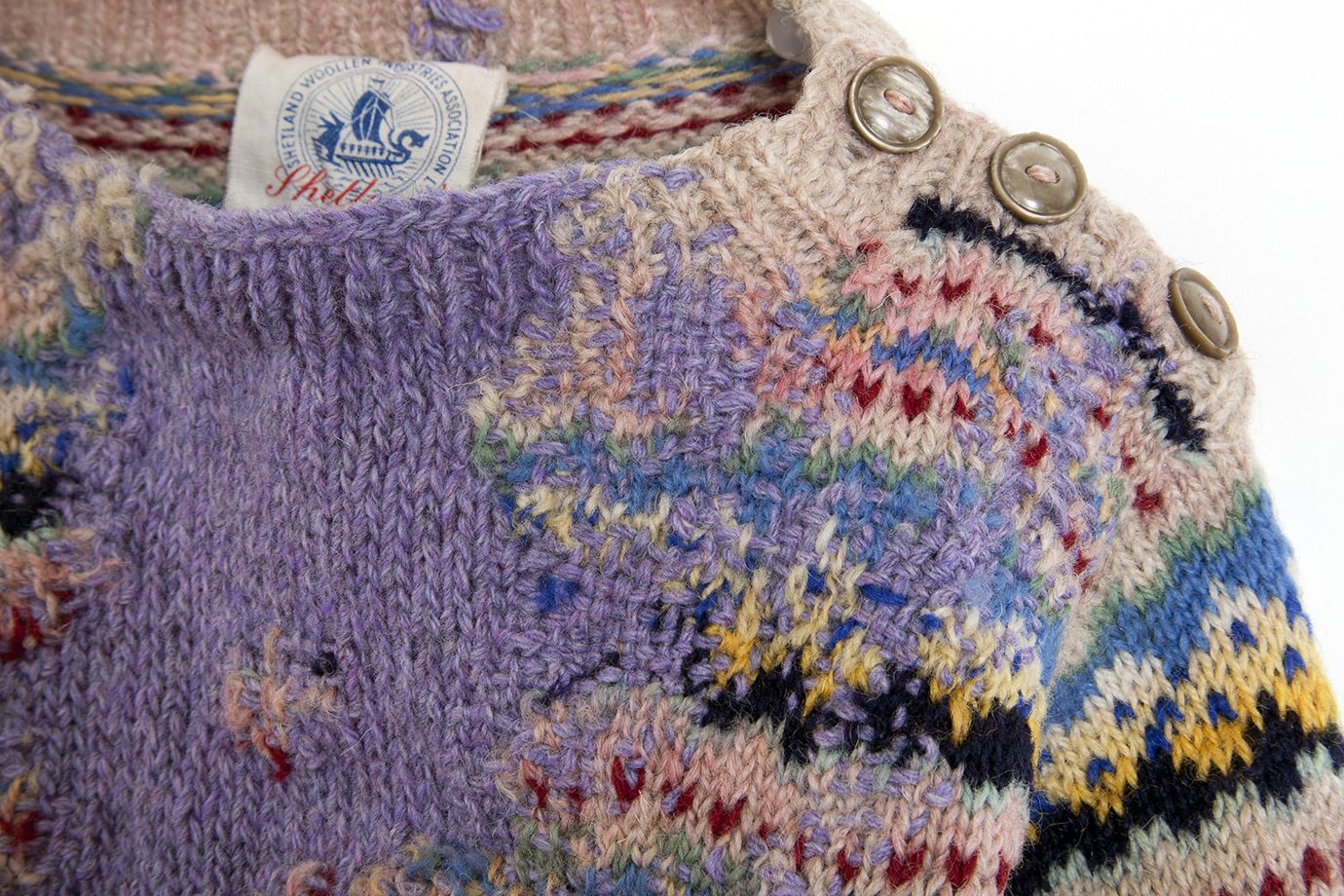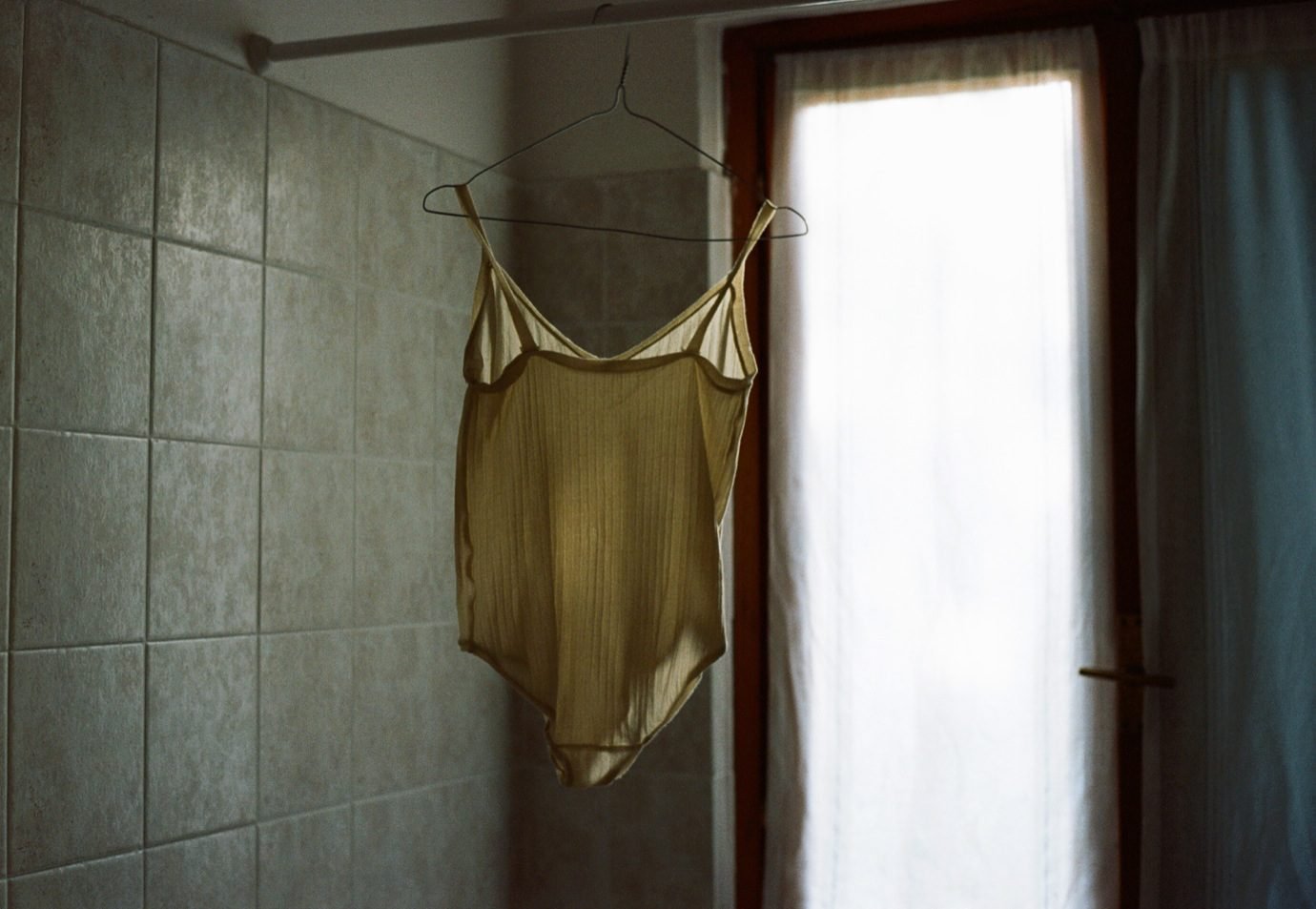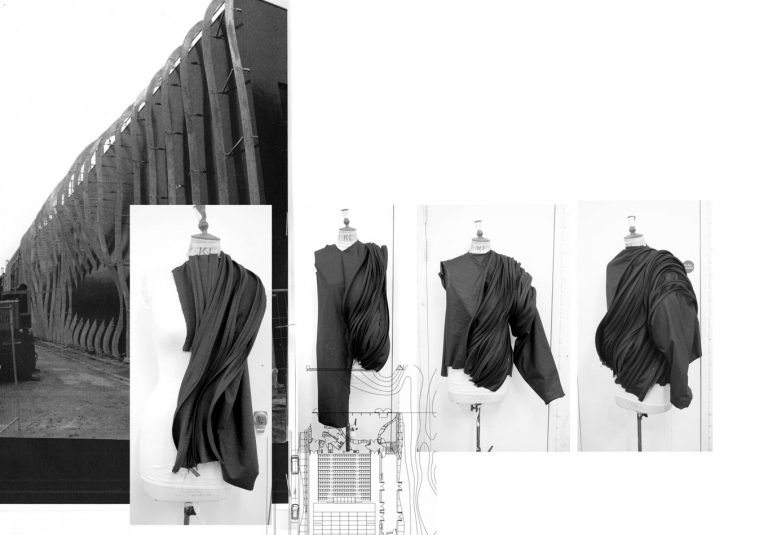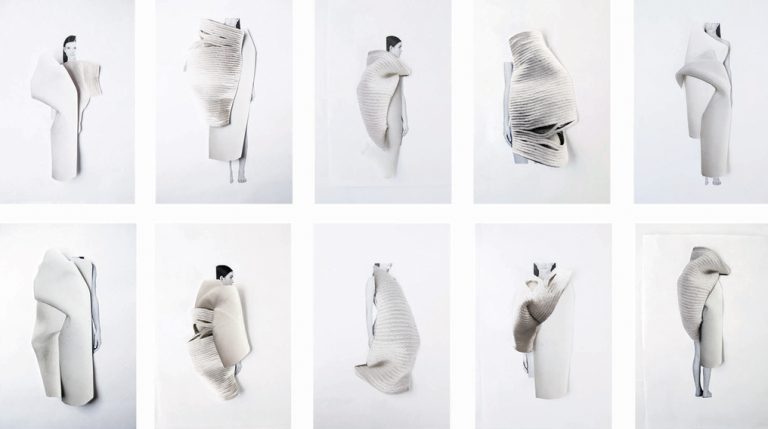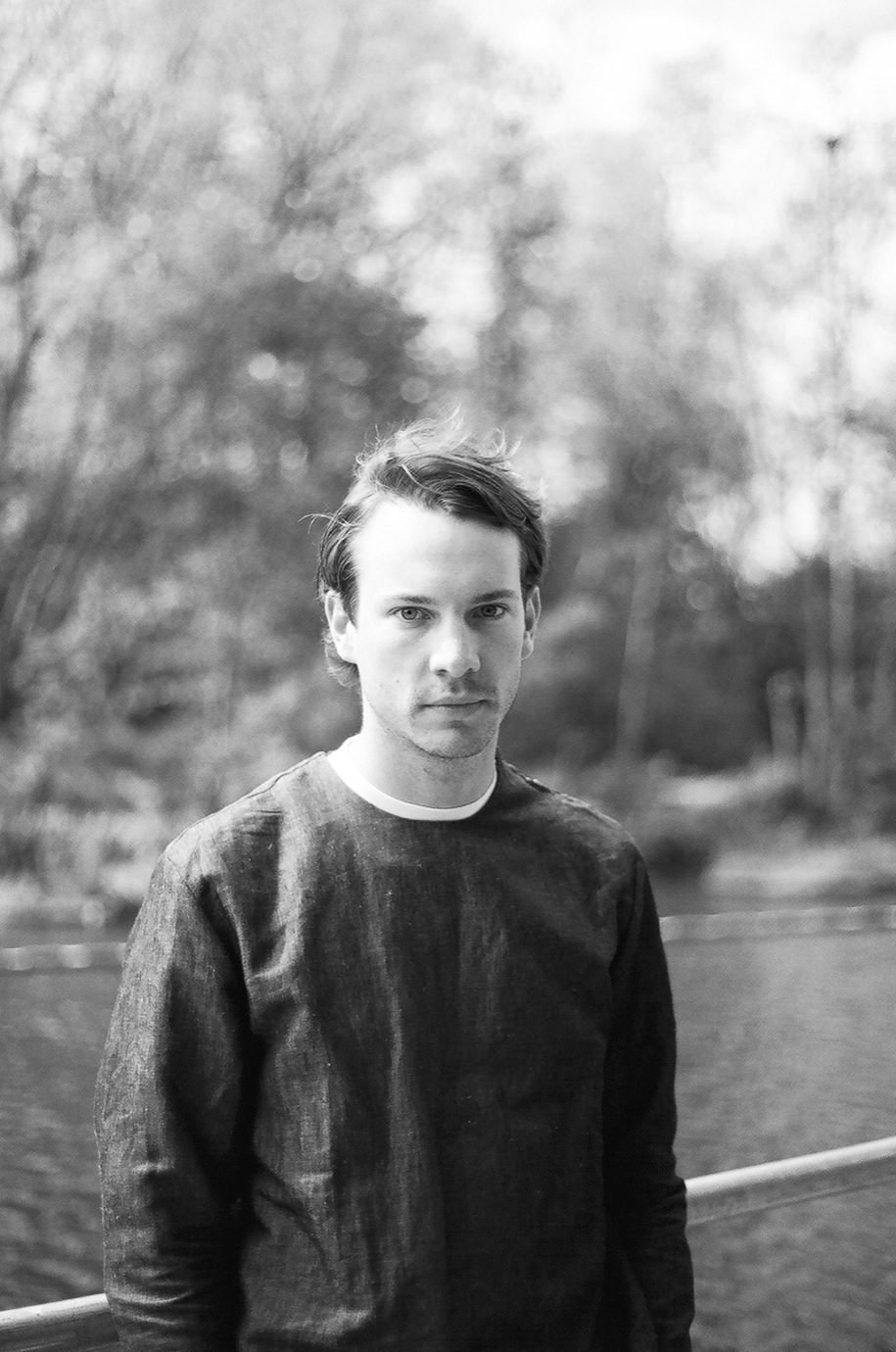Richard is a true textile designer at heart. Having spent his past six years at CSM, he completed a foundation and a BA in Fashion Print with a striking collection of evening gowns. The concept, a ripped and collaged mix of garden florals and party dresses, labelled Quinn as the ‘one to watch.’ His talent was noticed by the Stella McCartney foundation, who sponsored his MA studies. Working with this sponsorship was both an opportunity and a challenge to step up and be innovative with the materials he used. “It actually made me think harder,” said Quinn. “In fact, it actually drove me to be more creative and develop new techniques and surfaces. I wanted a black patent leather, so I developed a coating that resulted in all the seams in the garment disappearing, so it created a really amazing finish without any animal products.” He is a prime example of a new generation of designers pushing to create textiles in a socially conscious way.
The Masters: Richard Quinn
All florals, foils and oil slick patents, Richard Quinn’s debut at London Fashion Week was nothing if not vivid. “I wanted the excitement of fashion. Like back in the early days, with cut and color and texture and presenting an actual thing. I wanted people to get excited about that kind of world.” His faceless models hit the catwalk with an onslaught of evocative silhouettes in saccharin prints with heavy attitude. There was an awestruck silence, a hushed buzz, and a collectively fixed gaze on the show-closing number. Success. Covered head to toe in a clashing palette of rainbow brites, his collection was a refreshingly powerful example of unconstrained textile design.
The untitled collection is full of intricate details that are testament to his modern approach to textiles. His favorite piece – an Easter egg floral 50s frock over a houndstooth bodysuit, was produced completely without seams in the pattern. The process involved a continuous sheet of fabric that was screenprinted by hand, manually matching each edge of the pattern with each layer of color, one by one. Not only was the pattern pairing meticulous, but the bodysuit was made of tiny glass beads, handsewn into a textured black and white houndstooth.
Up close and personal, his designs are incredibly detail oriented. But taken as a whole, the image is a mix of intentionally random textiles marred with an unsettling darkness. He was inspired by the relatively unknown 60s artist, Paul Harris. Showing me a small book of Harris’ work (the only evidence of the artist I can trace) reveals a series of female figures that have been completely covered in textiles and upholstered onto furniture. The result is an eerie but visually stimulating mix of feminine figurines, gingham and granny florals. Quinn’s starting point – a photo of all the figures in one room – launched the idea of mixing different prints in a way that felt contemporary and fresh. Each woman and her look represents a different mood in Quinn’s world.
The looks cover models head to toe in textile. In the visually arresting imagery, the identity of the woman is in the print that she wears. In relevant gender related conversation, the looks could be read as feminist protest, but Quinn insists this was not his political message. “It’s got nothing to do with politics. It’s not about what women do or what women feel, but it’s to convey the world that my woman can fit into,” he says. Instead, he focuses on the craft and completely handmade quality of each piece. In an era of fast fashion and digitalized printing, we are seeing a consumer culture that is returning to bespoke garments and limited runs of pieces. This attention to construction and quality will absolutely help Quinn as he branches out with his own brand.
His designs are tough and no doubt pack a visual punch. The South-East London-born designer says his birthplace gives him a certain ‘edge’ that is ever apparent in his collections. There is a true contrast that resides between suburb and city life, especially when faced head on with the craziness of London and Central Saint Martins. When not in the studio, Quinn can be found covered in paint wearing his signature checked shirts. He is gentle and eloquently spoken, attributes which are apparent in his smart detailing and attention to craft.
The goal of his fashion is to build the clothes, but also the world around it. However, Quinn finds it restorative to get outside that bubble every now and then. “Most of my friends are far removed from the fashion world, which is great. It means I get real reverb to bullshit that you sometimes can get lost in,” he says. “It highlights bullshit people that are wrong to be around, which is good to have – people who have my back no matter what.” This separation between the ‘real’ and fashion worlds seems intrinsic to his design. He is keen on creating whimsy, but defining fashion in its strong construction and concept. In Quinn’s world, the garments are the attitude and vise versa.
His woman is a complete product of the environment that she makes. With mismatched prints, energetic new textiles and retro, but wearable silhouettes, Quinn’s faceless models are kicking ass and taking names. The collection was featured in the New York Times, Vogue.com, and was recently hailed by Dazed Digital as CSM’s ‘stand out.’ Richard approaches his future plans with a confident, relaxed demeanor – as he should, with potential stockists and exciting freelance prospects already in his basket. “I would love to show a new collection, just looking for the right time and potential platform.” As it seems, there is no better time than now.

